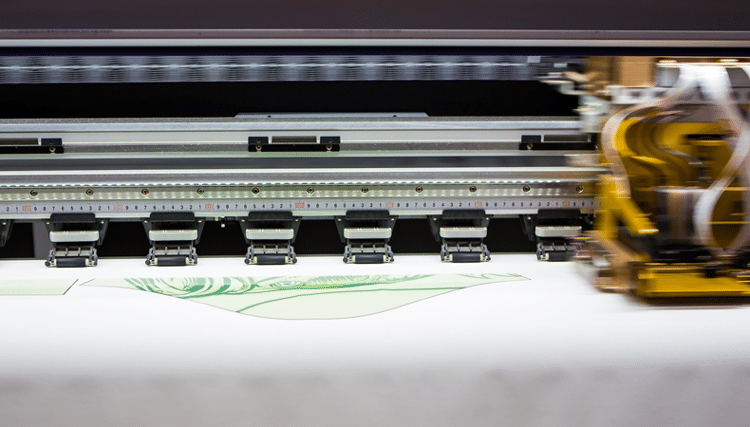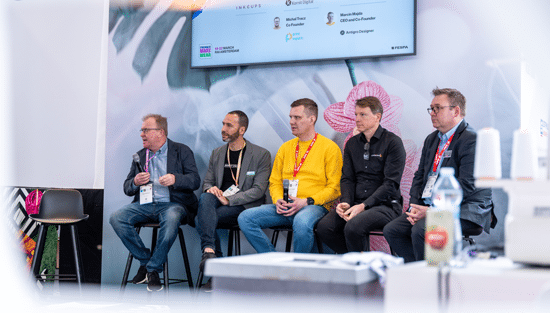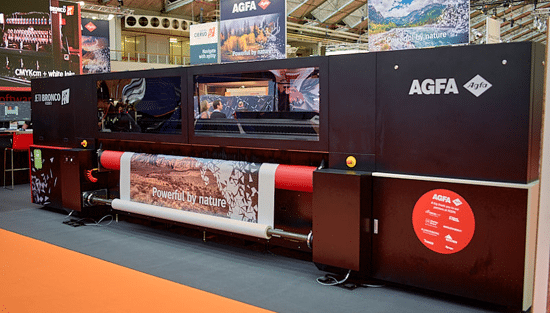The future of the garment industry is generative manufacturing

We speak to fashion-tech consultant Thomas Rothery, previously of FILA, about his career and his belief that generative manufacturing and co-creation will change garment printing forever.
Tell us about your career journey so far.
Innovation in fashion has always been a key interest of mine and I won a national innovation award when I graduated after a fashion degree. Since then, I’ve undertaken a range of different roles in the fashion industry, working at places such as [UK department store] Liberty and most recently at FILA.
I was at FILA for three and a half years, and in that time there was a lot of development in the Web 3 space and NFT [non-fungible tokens] type of areas. That fit in with many tech interests that I already had.
During my time at FILA, I made a number of suggestions, one of which was a partnership with RTFKT, a luxury digital brand – a bit like the Supreme of digital. I felt RTFKT was a cool brand that we should do something with. Unfortunately, Nike bought it out, but the fact that I had identified RTFKT as a company to watch led to me being involved in FILA’s Web 3 strategy and proposing more ideas. FILA wasn’t in a position to capitalise on all this and take it to market, so I decided to become a consultant.
You mention Web 3. What exactly is that?
Web 1 was the early days, when it was all about reading on the internet. Web 2 was reading and writing on the internet, and that incorporated things like chatrooms and social media where you could talk back and forth. Web 3 has the added layer of ownership.
Until now, we haven’t been able to own things online – other people could essentially copy and paste anything you put online. But with emerging technology such as crypto, it allows any digital artefact to be given a signature to prove where it came from. That means any images you post can be traced back to the person who originally made the image.
This digital ownership element feels like it was the technology we needed coming through just in time to protect us against the proliferation of fake news and generative AI exploiting creativity.
Will this play a role in the increasing crossover we see between what we can have in the virtual world, and what we have in the physical world – especially in terms of fashion?
I believe so. Just ask yourself, is life becoming more or less digital? If you have any children in your family, and you watch what they are doing, there’s an incredible amount of creativity being used in a game like Roblox or Fortnite. even if certain games aren’t obviously creative, they tend to have a creative mode so that you are not just fighting or competing, you are exploring identity creation.
We’ve always wanted to do that, whether it was our parents exploring their identity as punks or people doing it now, socialising in digital spaces. Therefore, it makes sense for brands to be there, and to be able to tell stories between the physical and digital. That hasn’t been explored well enough – it has tended to be isolated as one or the other.
Generative manufacturing is another of your interests. What is that?
Generative manufacturing is not necessarily AI, although it can be. What it means is something more akin to algorithmic manufacturing with a preset sequence of steps leading to an output.
Where designers and brands and creatives fit in is that they design the algorithm up front – that takes time to make sure that every output will look reasonably good – but then the outputs are generated by a customer pressing something that says ‘create’. That allows the process to run and go through its sequence of steps, to generate a unique output but that has a shared identity thanks to the way those steps have been set up.
In terms of clothing, there might be a predetermined product – for example, a t-shirt. The print that goes on that t-shirt will be uniquely generated, although it will share certain characteristics with every other image that has been generated by other customers who have pressed ‘create’ and ordered one.
If you look at the website Art Blocks, that is a generative art platform that illustrates how this works. You can apply those principles to t-shirt printing or even physical product manufacture, although once you go from 2D to 3D, things get much more difficult.
So, this isn’t open-ended AI-style image generation?
No. If we extend the notion of generative manufacturing, there is some amazing storytelling and fun community building that can be done.
The abbreviation here would be something along the lines of: 1 of 1 of x. Here 1 of 1 means that the product is unique, but the x means that it is part of a collection. That process is great because it means you have community membership, but also a unique identity within that community.
There is a lot of potential there but when that is incorporated into physical manufacturing, it does require flexibility of the printing or manufacturing, which is a lot more difficult than simply generating an image on a screen.
Is that what you are most excited by at the moment?
Generative manufacturing has incredible potential and then, as an extension of that, there is also co-creation. Co-creation is partly the person choosing – the customer, say – and partly the designer or computer they are working with. I think there is a lot of exciting potential in there that can be done across physical and digital environments.
Therefore, you could apply the same thing that you have chosen in, say, a Call of Duty game or an EA Sports FC game, and also have it in the real world. And the way that they interplay – especially if augmented reality, such as Meta smart glasses, take hold – means we will eventually be living in more augmented lifestyles where we will see fewer differences between a physical and a digital item of clothing, for instance.
That means lots of potential for designers and for printers working with everyone in that chain. I think everyone will get to learn a little more about the skills needed, so printers who work in the physical realm may well work with augmented reality designers to replicate what they do in that space.
Finally, are we looking towards a situation where, with any clothing or sports kit you might design for an avatar in a game, you’ll be able to press a button and have a physical equivalent delivered to yourself?
In the long-term, that’s one aim, although it depends on factors such as how easy will it be to have one-off manufacturing. But it would be amazing because it plays into sustainability elements such as on-demand ordering – which is wonderful and we should be focusing towards that.
There is still the factor of having the resources in the right location ready to produce that one unique design, because there are usually many set-up costs and other constraints in existing manufacturing processes that make this kind of thing really difficult.
But that’s the challenge on us as industry people to try to overcome. There is a lot that needs to be developed to make it happen but that would be amazing, because the sheer volume of other possibilities something like that would feed into would be incredible, not just for the innovative projects but for general demand-driven manufacturing as well as reducing the environmental impact and costs of transportation.
Become a FESPA member to continue reading
To read more and access exclusive content on the Club FESPA portal, please contact your Local Association. If you are not a current member, please enquire here. If there is no FESPA Association in your country, you can join FESPA Direct. Once you become a FESPA member, you can gain access to the Club FESPA Portal.
Topics
Recent news

The personal touch: visit Personalisation Experience’s SmartHub Conference 2025
Join the SmartHub Conference at Personalisation Experience next month to stay ahead of the latest tech and trends.

How to build brand trust using customer reviews
Reviews can benefit or damage your business’s reputation. From spreading the word to social proof, here is why reviews matter and what you can do to manage your customer reviews to improve your brand’s reputation.

Regulation guidance: Extended Producer Responsibility
Extended Producer Responsibility (EPR) is now in effect. What does it mean for those in the print industry? Sustainability consultant Rachel England outlines everything you need to know.

How to maximise the automation of your production workflow
Workflow automation has evolved beyond basic file prep, now encompassing job submission, prepress, and postpress. Printers automate to boost productivity, cut waste, and address skill shortages. Implementing tailored automation, from RIPs to MIS, optimises throughput and profitability, minimising human intervention.